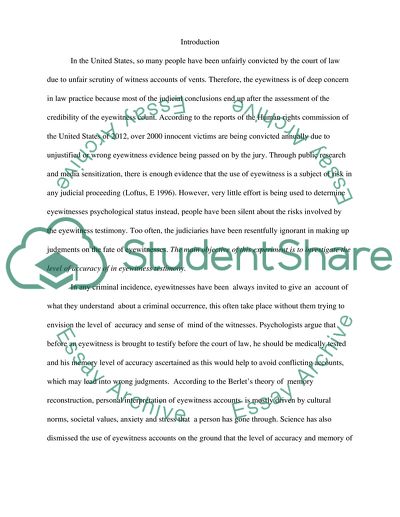Cite this document
(“Eyewitness Testimony Essay Example | Topics and Well Written Essays - 1500 words”, n.d.)
Eyewitness Testimony Essay Example | Topics and Well Written Essays - 1500 words. Retrieved from https://studentshare.org/psychology/1630313-eyewitness-testimony
Eyewitness Testimony Essay Example | Topics and Well Written Essays - 1500 words. Retrieved from https://studentshare.org/psychology/1630313-eyewitness-testimony
(Eyewitness Testimony Essay Example | Topics and Well Written Essays - 1500 Words)
Eyewitness Testimony Essay Example | Topics and Well Written Essays - 1500 Words. https://studentshare.org/psychology/1630313-eyewitness-testimony.
Eyewitness Testimony Essay Example | Topics and Well Written Essays - 1500 Words. https://studentshare.org/psychology/1630313-eyewitness-testimony.
“Eyewitness Testimony Essay Example | Topics and Well Written Essays - 1500 Words”, n.d. https://studentshare.org/psychology/1630313-eyewitness-testimony.


